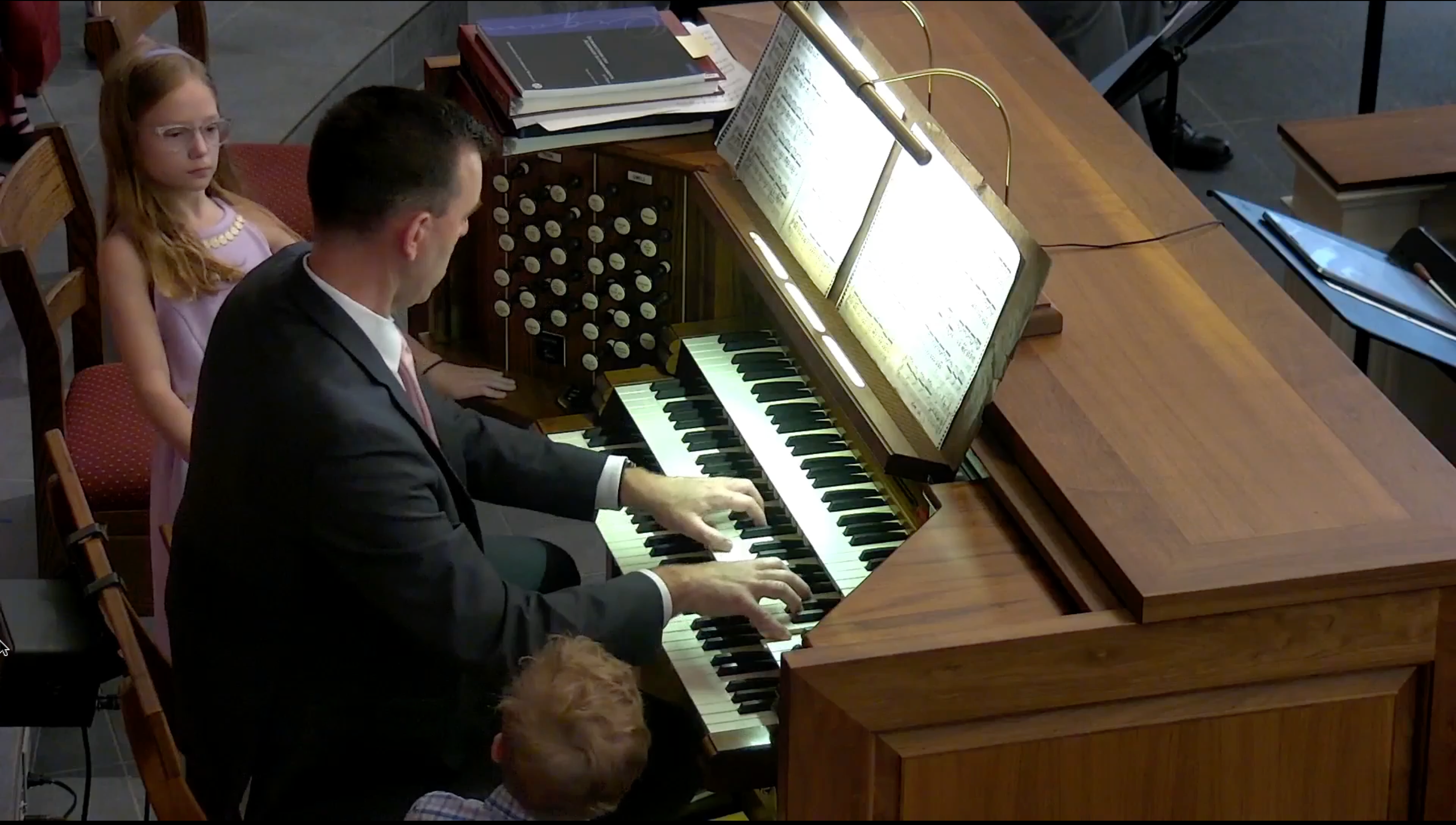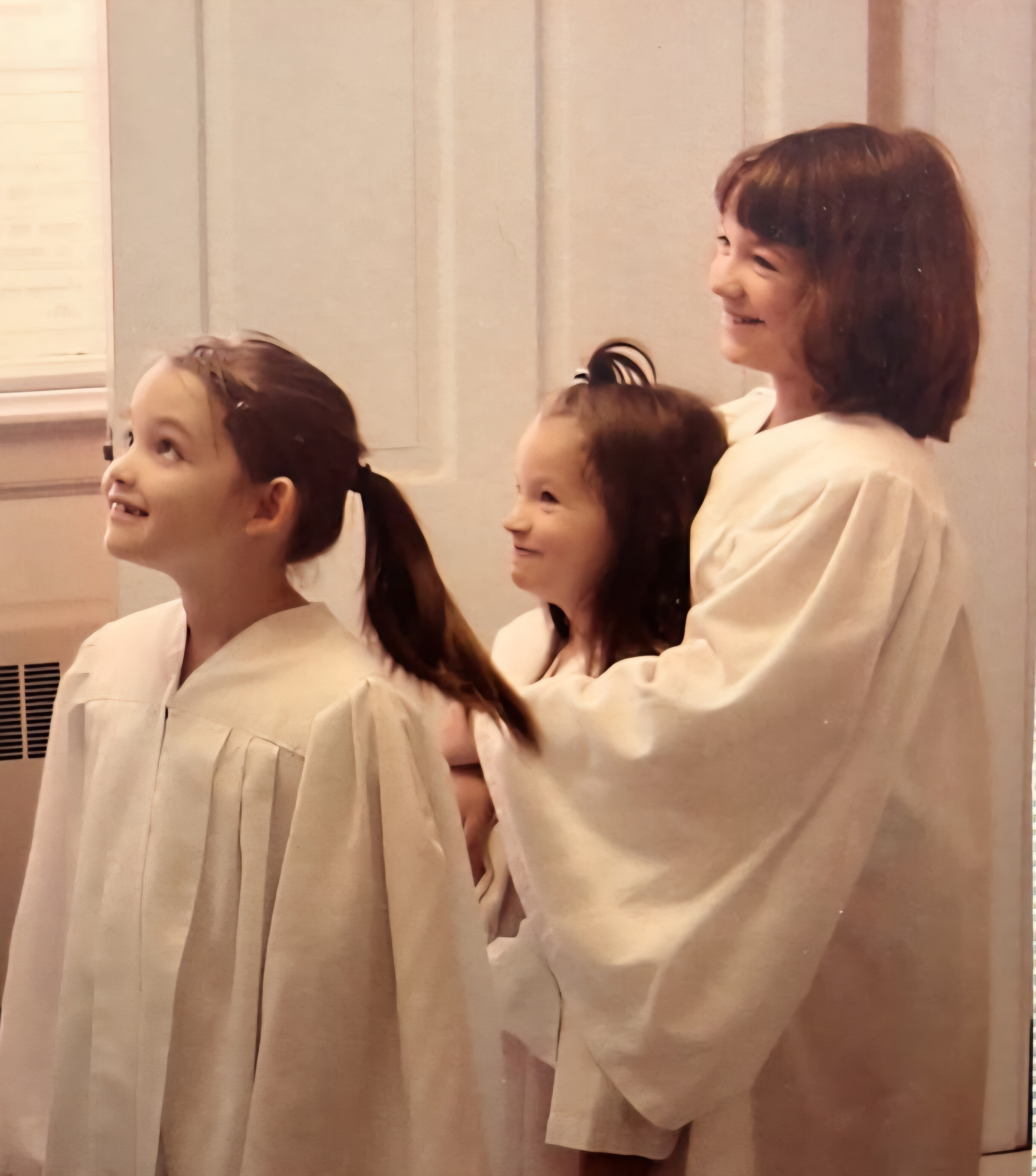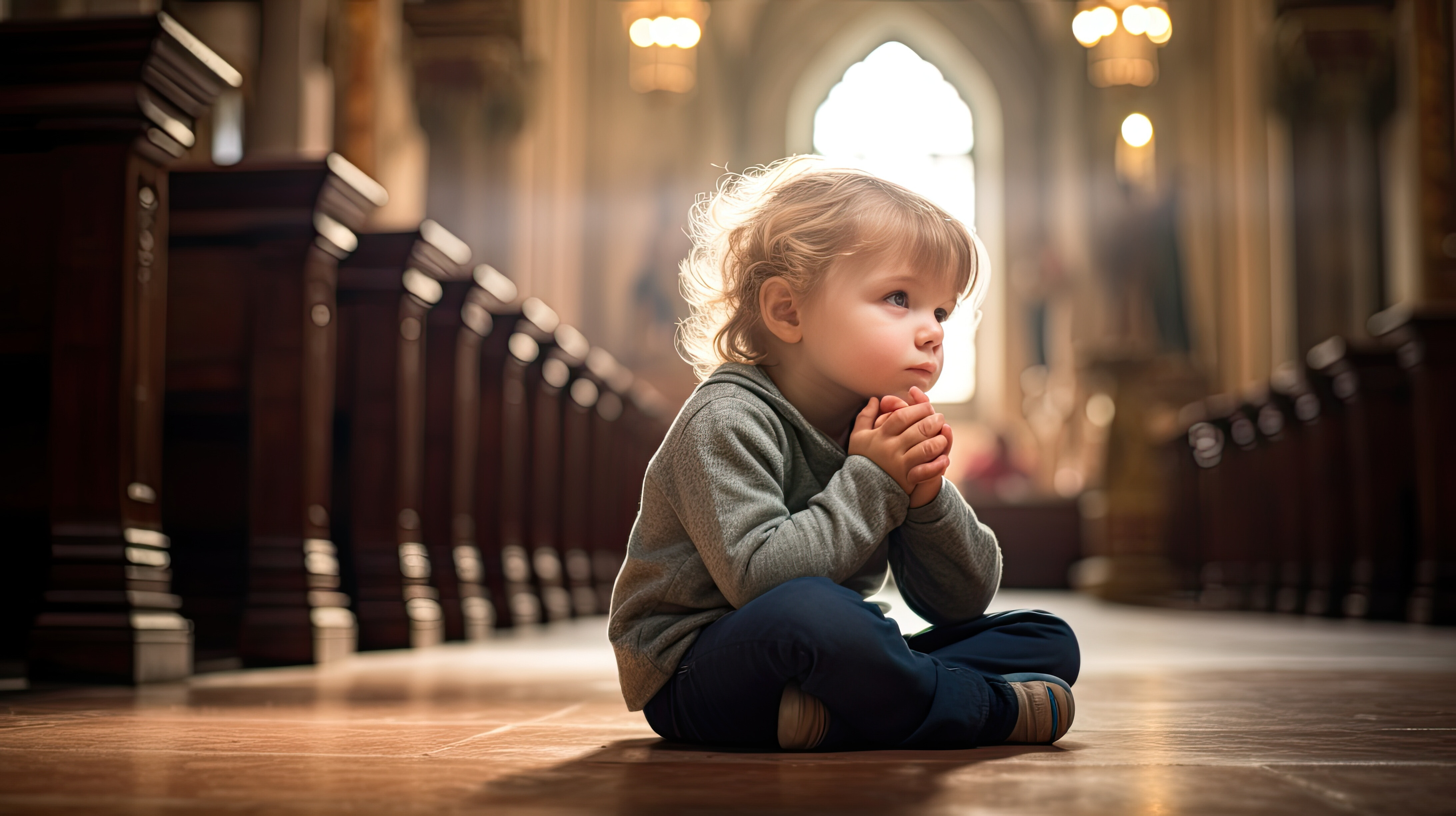
A Family Tradition of Worship
As far back as I can remember, my whole family went to church together on Sunday mornings from 9 a.m. to noon. My dad was the Sunday school superintendent and the sound technician during the service. My mom taught Sunday school and sang in the choir.

I vividly recall the first time I was considered old enough to walk by myself from my Sunday school room into the sanctuary to meet my dad. I felt so grown up. During the service, I remember being very little and falling asleep in his lap. As I got older, I earned the privilege of sitting with my best friend in our own pew—though I also remember getting “the look” from my mom in the choir loft when we got a bit too loud!
Shaped by Belonging
I often say that growing up in the church deeply shaped who I am today. As a child, I felt such a strong sense of belonging that I would confidently tell friends that every single person in the building knew me.
 As a teenager, when I had questions about faith, I sought out the adults I’d known my whole life—mentors who helped shape how I understood God. Research supports this idea: a strong sense of belonging and being known is deeply influential to children. I once read an article that showed how children with even one strong adult role model outside their home tend to have better life outcomes than those with none.
As a teenager, when I had questions about faith, I sought out the adults I’d known my whole life—mentors who helped shape how I understood God. Research supports this idea: a strong sense of belonging and being known is deeply influential to children. I once read an article that showed how children with even one strong adult role model outside their home tend to have better life outcomes than those with none.
Helping children feel seen and known is not the job of a few—it belongs to the whole church. As authors and theologians Laura Keeley and Robert J. Keeley wisely remind us: “It is not enough to be told that we belong. We need to feel it.”
Creating a Culture of Belonging
So how do we help children feel that they belong?
1. Know Them
First, we have to know them. Do you know the names of the children in our church? Do you know who their parents are? Are you engaging with families during coffee fellowship or church events?
If not, consider setting a goal to meet one new family each month. Be intentional about showing up in spaces where children and families are already present—like VBS, Kids Connect, Nursery, and Sunday school.
2. Welcome Them with Actions
Second, we must welcome children not just with words, but with meaningful actions. As you build relationships, sit with children and families during the service. Yes, children can be wiggly, but they are also deeply curious.

Ask them questions about the service. Help them find the right hymns, and explain some of the big words. Encourage them to stand, sit, sing, pray, and respond with the congregation. And don’t be discouraged if they seem to be just playing—children absorb more than we realize and often process the world around them through play.
3. Believe in Their Full Participation
Finally, we must truly believe that children can be full participants in the body of Christ. Mimi L. Larson writes:
“Too often we focus on children’s lack of attention or their inability to comprehend the depths of theology as a reason to dismiss them from worship. Yet Jesus’s admonition rings out: ‘Let the little children come to me, and do not hinder them, for the kingdom of God belongs to such as these’ (Luke 18:16). Children do not receive a half-portion of the Spirit just because they are young. The Holy Spirit works in, through, and with children.”
A Living Picture of the Kingdom
Having children in the church is a gift. It’s a sign that the church is active, alive, and a living example of the Kingdom of God.
It is my hope and prayer to see WPC continue to grow as a dynamic, faithful, multi-generational house of worship—for all.
Children Dancing in Worship
This short video captures the joyful moment when children, after participating in the worship service, danced down the aisle to close the service. A beautiful reminder of how fully children can engage in worship life!
(Replay it as often as you'd like—it's worth a second watch!)



